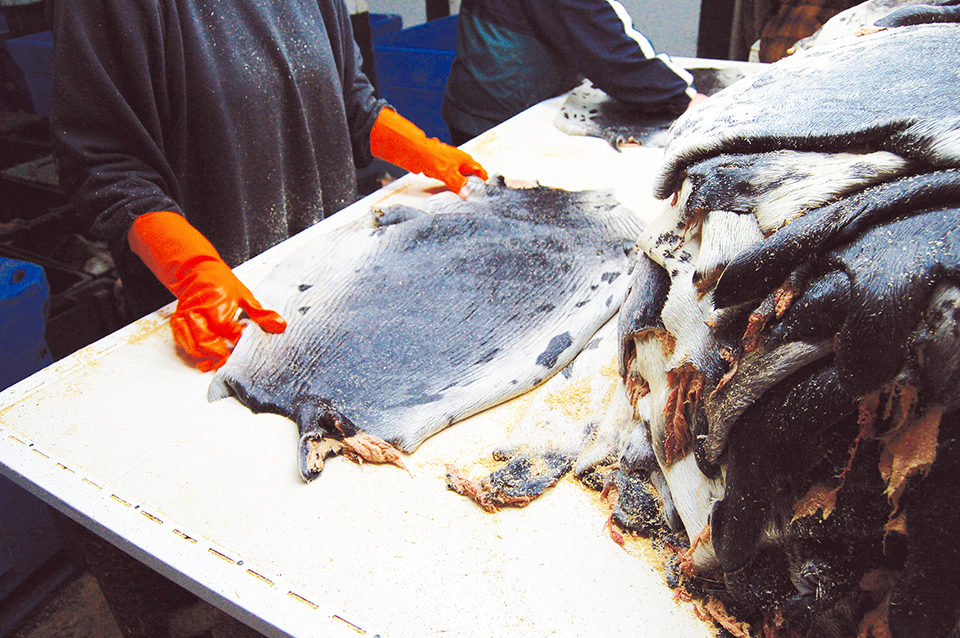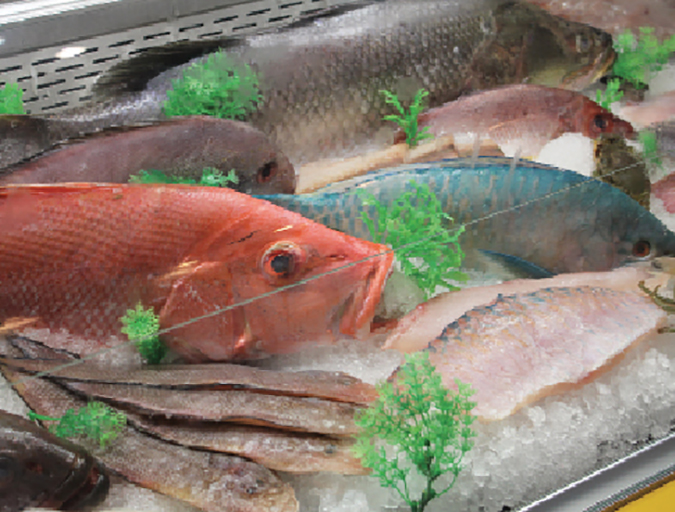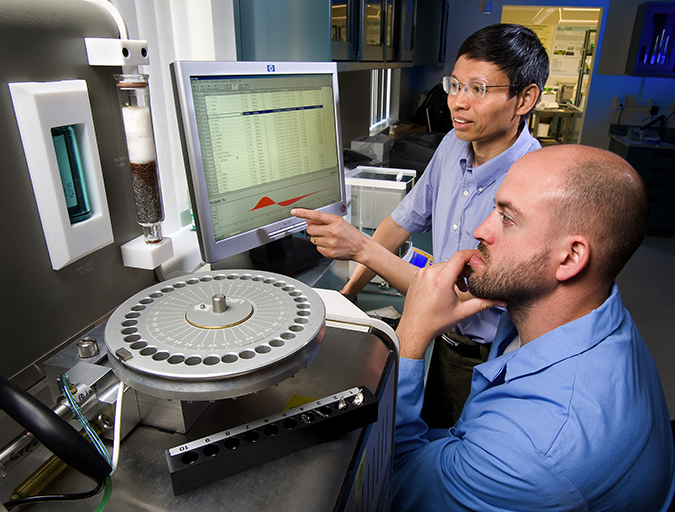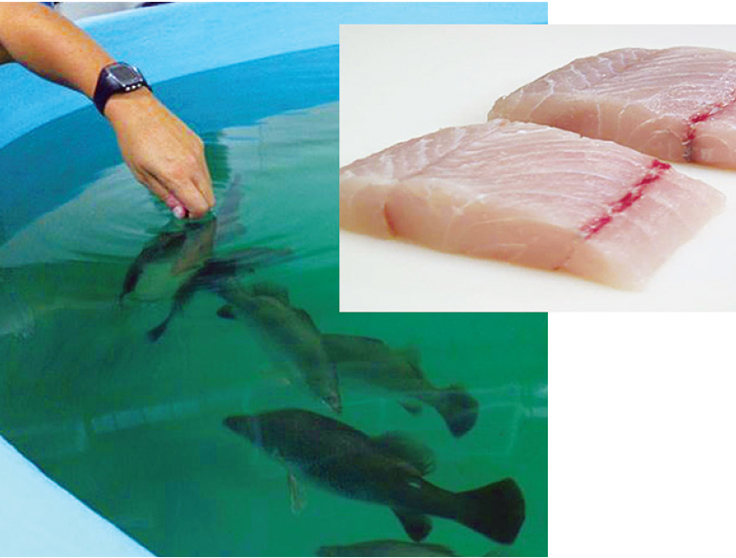Aquaculture must market more than sell, with attention to branding and image

The amount of advertising that is centered on fish oils is overwhelming and highlights that the margins being made in the capsule business are far in excess of the margins being made on fish.
This brings home strongly the difference between “marketing” and “selling.” The companies behind the capsule business are not seafood-based but health or medical organizations – they are not locked into traditional selling, but are more about modern marketing. There is much the seafood industry can learn from this, as our industry is – and has been since time began – locked into selling a commodity.
Market or sell
Wild fish are the last “hunter-gatherer” items that you see regularly on restaurant menus. Generally speaking, they are sold on traditional commodity-based models. There has never been any specific marketing, although to their credit, groups like the Alaskan Seafood Marketing Institute have been trying to change this.
Aquaculture needs to lean more toward marketing than selling, with more focus and attention to branding and creating an image. Otherwise, it will be stuck in a rut.
Let us look further into this. Just recently, probably because the southern winter is over, and thoughts turn toward summer and the beach, there has been much talk about diets.
Paleo diet
One interesting, and in fact very old, lifestyle eating program is back in the headlines in Australia, primarily because it is being driven by a chef on television. This Paleo – short for Paleolithic – Diet promotes eating as they did back in the caveman era, with lots of protein and fiber from a variety of fruits and vegetables.
The personality is an unusual T.V. chef, for he does not even cook on his highly rated show, called “My Kitchen Rules.” It is all about couples cooking in their homes and being judged by the chefs and their peers.
Among other activities, he now gives motivational talks on “The Paleo Way,” strongly promoting the benefits of the fashionable diet. A T.V. series with the same name is just around the corner.
To his credit, the personality invested some time in an Internet course and became a health coach with qualifications from New York’s Institute of Integrative Nutrition. My gut feeling (pun intended), however, is that he saw an opportunity, and with knowledge, skills and contacts gleaned over his media career has found a niche and secured a marketing win.
Farming and feeding
With red meat sales on the decline in Western society, it would not surprise me if the meat and livestock business development teams were backing the Paleo campaign because, let’s face it, they have marketing dollars and are not afraid to use them.
In the Paleo Diet, one of the biggest issues concerning fish is the choice between wild-caught and farm-raised animals. Some paleontologists believe that only wild fish can be consumed and shun farmed fish. All, however, support the consumption of mussels and oysters due to the animals being natural feeders.
As one specialist said: “At first glance, fish farms seem like the perfect solution to overfishing. If humans like to eat a particular species of fish, we can just grow more of it, saving wild populations from depletion. This is why nobody is worried about whether cow or chicken populations can keep up with demand. If we need more, we’ll just breed them. Why couldn’t we do the same with fish?”
We then get into the debate. It is all about feeding the fish and what we feed them. The aquaculture industry, especially at the high end, needs to articulate and market the story so that it is very clear and not open to innuendo.
The problem is worsened when so-called responsible groups say, “Most farmed fish are presently fed fishmeal and oil made from wild-caught fish.” Yet by far, the majority of fish farmed are freshwater herbivores.
Focus needed
The lack of a strong aquaculture marketing focus in Western countries has enabled the “anti-seafood” people to create doubts, something they do very well. Arguments that farmed fish are not as nutritious, lack vitamin D, and contain much lower levels of omega-3 fatty acids and higher levels of the omega-6s have allowed the issues to be taken to higher levels than if the industry had been proactive.
The amount of time, effort and money going into research on fish feeds is enormous, and great strides have been made. But somehow this information is not getting through, which highlights the need for more concerted efforts. Responsible aquaculture demands that we continuously improve and that we seek out potential feed alternatives like insects, algae/seaweed, worms, yeast and single-cell protein.
Seafood provides the most environmentally sustainable protein in the world, and we need to get this point across much better than we have.
Seafood or supplements
Whether they’re tight on money, too busy to cook, can’t get consistent supply or just plain don’t like the taste of fish, many people try to get the benefits of dietary seafood from fish oil supplements. Despite the marketing hype, supplements are rarely as good as the real thing. Fish oil might be great with the omega-3s, but it does not contain any of the other beneficial nutrients and vitamins found in fish and is not absorbed as well.
People who take fish oil need to choose it carefully. Unlike whole fish, fish oil does not contain things like selenium and other such excellent minerals found in seafood.
I recently read such advice about fish oil supplements: “As soon as you have bought your supplement, make sure the oil is fresh by breaking open a capsule and smelling it. If it smells like rotten fish, it’s rancid – throw it out! Since fish oil goes bad very easily, make sure to keep it in a cool, dark place so that it stays fresh. Take the supplement with a fatty meal, to aid in absorption. All the DHA and EPA in the world won’t do you any good if your body can’t use it.”
Let’s face it – taking a pill or capsule for anything should always be your second choice.

Fish oil standards
The Codex Alimentarius Commission is now taking an interest in fish oil, which hopefully will ensure the establishment of some level playing field for what can and cannot be claimed when promoting these supplements. The Codex committee noted that the inclusion of specific named fish oils in the proposed draft standard should be supported by adequate information.
This would include volumes of production and consumption in individual countries, volumes and patterns of trade, and international or regional market potential. Details of the proposed essential composition and quality factors should be stated. In addition, data on the fatty acid composition of the types of named fish oils should be robust and take into consideration main contributing factors, such as climatic conditions, season and geographical location.
A survey was conducted by Codex to identify which types of fish oil are significant items in trade volume and value, and whether testing of several batches would allow the definition of distinct fatty acid profiles. The data received were circulated to members of the Codex Working Group for comments. Recommendations now being considered are expected to affect the accuracy of labeling, among other things in this burgeoning industry.
Seal oil
Strangely, one oil not mentioned is probably one of the finest: seal oil. The benefits of seal protein and the omega-3 fatty acids it contains are huge. Research undertaken by Dr. Cosmos Ho with the Canadian Memorial University of Newfoundland showed that omega-3 fatty acids obtained from seals are of the highest grade of any natural resource. This is amazing, for the Canadian government also recommends their citizens consume around 1.5 grams of seal oil daily. The Inuit, a group of indigenous peoples inhabiting the Arctic regions of Greenland, Canada and the United States, are living proof of this health benefit. In fact, this revelation is what initially spurred interest in omega-3 fatty acids.
According to official Canadian government figures, seal populations number over 9 million, so the animals are by no means under threat or endangered. The Canadians have long struggled for markets for their seals, having been constrained to a very strict quota of around 300,000 animals annually – well below the mean sustainable yield. This number could be increased to enable the seal numbers to be brought back to manageable levels and enable fish species consumed by seals to recover.
The Grand Banks off the eastern coast of Newfoundland, Canada, may have been overfished by man, but the failed recovery of cod stocks can be attributed to the over-predation by seals. This could be a global success story where benefits are found for aquaculture, and seals and wild fish stocks move to recovery.
(Editor’s Note: This article was originally published in the November/December 2014 print edition of the Global Aquaculture Advocate.)
Author
-

Roy D. Palmer, FAICD
GILLS
2312/80 Clarendon Street
Southbank VIC 3006 Australia
www.gillseafood.com[109,111,99,46,108,105,97,109,103,64,114,101,109,108,97,112,100,121,111,114]
Tagged With
Related Posts

Intelligence
Food is abundant, yet people are starving
While significant numbers of people are undernourished, an increasing number of people are overweight. The divide between recommendations and results is marked, so we must learn more about food production and change our behaviors.

Intelligence
Making the case for a seafood-based economy
The “Towards a Seaweed Based Economy” report made the case that poor nutrition is the major cause for the pandemics of obesity and several chronic diseases. It recommended increased use of food-production systems like integrated multi-trophic aquaculture.

Aquafeeds
Alternative feed ingredient universe to convene at F3 meeting
What started out as a simple yet ambitious contest to drive innovation in the aquafeed sector has evolved into a fully global competition – and collaboration – amongst ingredient suppliers and feed manufacturers.

Intelligence
Adding flavor complexity to farmed barramundi
Organoleptic attributes such as flavor and aroma are among the most important factors that influence consumer acceptability and demand for fish products. Consumers have identified farmed fish as less complex and lacking “sealike” or “sea-fresh” flavors and aromas.

